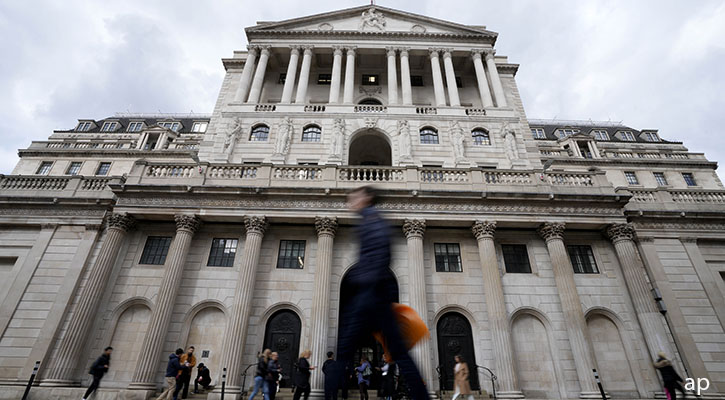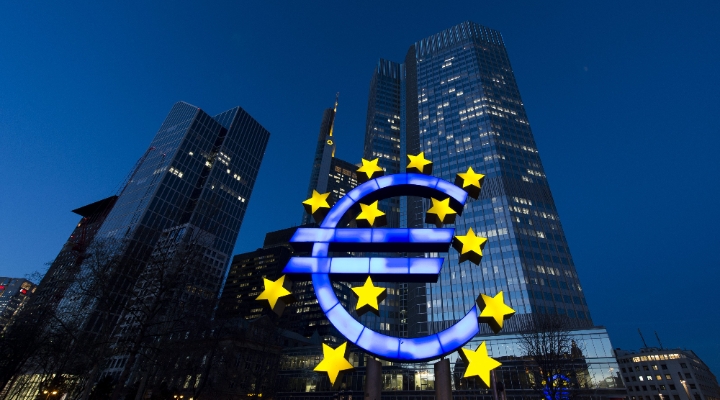
UK consumer prices unexpectedly heated up in December, according to data from the Office for National Statistics on Wednesday. The surprise uptick in CPI complicates the timing of expected interest rate cuts from the Bank of England, which had been expected by some experts to cut rates in the coming months.
The ONS said the consumer price index rose by 4.0% annually in December, the pace of inflation notching up from a 3.9% increase in November. Higher and alcohol tobacco prices were behind some of December's changes.
The reading came in hotter than market expectations, with consensus having been for price inflation to cool to 3.8%, according to FXstreet.
Core consumer prices, which exclude energy, food, alcohol and tobacco, rose 5.1% in December annually, having risen by the same amount a month earlier. The reading came in hotter-than-expected, with market consensus expecting core prices to cool to 4.9%.
In both the Eurozone and United States, inflation has ticked up again after a downward trend.
Bank of England February Meeting in View
The increase in inflation suggests that the Bank of England will employ a “wait and see” approach before curring interest rates. On February 1 we get the Bank's latest monetary policy report and more forecasts for inflation in 2024 and beyond, plus the inevitable questions about the timing of rate cuts. The ECB and Federal Reserve will make decisions before then.
In December the Bank said: "monetary policy will need to be sufficiently restrictive for sufficiently long to return inflation to the 2% target sustainably in the medium term."
When Will the Bank Cut Rates? February Looks Unlikely
As part of our 2024 outlook week we collected investment banks' forecasts for UK rate cuts; no doubt these will seem out-of-date very quickly as the year progresses. Goldman Sachs were the most doveish, expecting the first rate cuts in February or March. Now consensus forecasts are lining up towards a May rate cut.
Where Next for Interest Rates? Experts React
Susannah Streeter, head of money and markets at Hargreaves Lansdown says policymakers are still likely to stay ultra cautious about the prospects for interest rate cuts this year.
“Worries are still swirling about the effect on prices of delays to goods arriving from Asia, given that attacks in the Red Sea are disrupting around 20% of global shipping. The tight labour market here in the UK will also be a cause for concern, despite signs that wage growth is easing. Downwards pressure on inflation is still expected, with the World Bank forecasting global growth to slow, and the UK economy at the edge of recession, this should act as a further drag on demand.”
Jeremy Batstone-Carr, European strategist at Raymond James Investment Services explains that the slight increase in the monthly headline rate of CPI, which edged up by 0.4% (the same rate as November) is a consequence of retailers increasing prices following the Black Friday sales. However, the rise disguises continued falling food prices seen across autumn, and that “the general direction of travel indicates that the economy will begin to blossom again as winter turns to spring”.
“When the Bank releases its overhauled forecasts, estimates will likely reflect this encouraging trend in domestic price pressures. This data has come too soon to capture any potential upside risk associated with shipping disruptions in the Red Sea, but this will likely be reflected in next month’s figures and will likely make little more than a marginal difference.
Danni Hewson, head of financial analysis at AJ Bell, names two key factors driving inflation upwards: “One is a UK quirk – the impact of increased duty on tobacco products created the lion’s share of last month’s hike.
“But it’s the uptick in service inflation which will trouble Bank of England policy makers,” Hewson says. “That’s the sticky bit that will make the last few percentage points harder to whittle away.”
Mark Taheny, senior director at corporate finance advisor Centrus, comments: “While services and wage inflation are proving sticky, the UK swap market has fewer cuts priced-in than its US and Eurozone counterparts. This could result in a stronger pound later this year. Viewed alongside a surprise economic expansion in November, we're finally seeing some long-awaited confidence in businesses for 2024.
“However, many are keeping a grave eye on global affairs which could knock progress off track. Though issues in the Red Sea are yet to have a material impact, rising tensions across the Middle East, the ongoing conflict in Ukraine, and the Taiwan election result all have the potential to cause large spikes in prices. With a sense that even best-case headlines could significantly affect the markets, businesses need to ensure that they have robust hedging strategies in place to protect themselves against such scenarios.”
Article written by Alliance News, James Gard and Sunniva Kolostyak




























